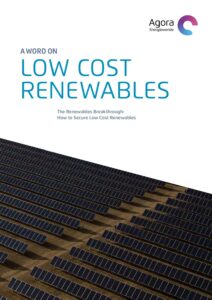Recent renewable energy prices are shaking up the global energy landscape: as renewable energy technologies become the lowest cost source for new power generation, governments and utilities around the world are responding by purchasing more, triggering a powerful feedback loop as economies of scale continue to grow, supply chains mature, and technologies continue to improve. Taken together, these developments are in the process of turning renewables’ recent cost advantage into a permanent competitive edge.
Due to a powerful combination of political and market factors, including abundant renewable energy resources, some countries like Mexico, Chile and the United Arab Emirates have recently achieved record-low prices around 0.02 USD/kWh for large-scale wind and solar projects.
While the media, analysts, and regulators marvel at the rapid cost declines that have taken place in recent years, less attention has been devoted to understanding the conditions that have enabled such low cost bids. This paper seeks to provide an analysis of how these historically low costs (reflected primarily but not exclusively through bids in recent auctions) are occurring, and what underlying conditions have made them possible. As such, this paper has been written to support policy makers in designing policy environments to enable low cost renewables in their jurisdictions


